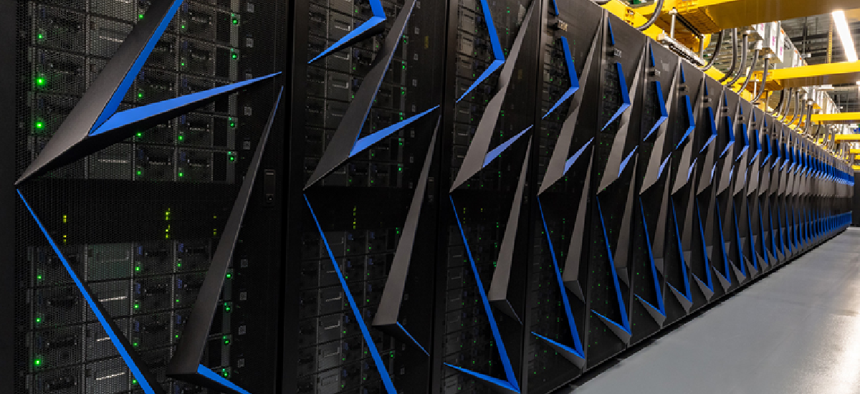Shared infrastructure powers federal COVID research

The COVID-19 Insights Partnership creates a framework for the Departments of Health and Human Services and Veterans Affairs to take advantage of the high performance computing and artificial intelligence resources at the Department of Energy to conduct cutting-edge COVID-19 research.
Three agencies are targeting their big data and computational power on analyzing COVID-19 health data.
Announced July 28, the COVID-19 Insights Partnership creates a framework for the Departments of Health and Human Services and Veterans Affairs to take advantage of the high performance computing and artificial intelligence resources at the Department of Energy to conduct cutting-edge COVID-19 research.
Research will focus on vaccine and therapeutic development and outcomes, virology and other critical scientific topics to understand COVID-19 better, the Energy Department said in a statement.
The partnership expands upon the COVID-19 High Performance Computing Consortium, which currently provides researchers access to portions of 16 supercomputing systems in federal, academic and private-sector facilities. There. scientists can tap into modeling and simulation, artificial intelligence, machine and deep learning, data-intensive science, visualization and data analysis to learn more about the virus.
All three agencies have already invested in collaborative COVID-19 research.
The Summit supercomputer at Oak Ridge National Laboratory is running large-scale, complex analyses on a vast amount of health data to help researchers identify and advance potential treatments and enhance outcomes for COVID-19 patients. One study analyzes genes from cells in the lung fluid of nine COVID-19 patients compared with 40 control patients -- 17,000 samples -- to see if gene expression patterns explain the runaway symptoms produced by the body’s response to the virus. With Summit, the team completed the calculations in one week rather than the months they would have taken on a desktop machine, Oak Ridge officials said.
Oak Ridge is also providing rapid remote access to its spallation neutron source and high flux isotope reactor, equipment that supports neutron macromolecular crystallography, small-angle scattering, reflectometry, spectroscopy and imaging beamlines.
In April, the Energy Department announced the National Virtual Biotechnology Laboratory, a clearinghouse that leverages the equipment of the national labs, including high performance computers, to address key COVID challenges. The virtual lab’s computing, diagnostics and epidemiology teams are also tied into a national task force run by HHS and the Federal Emergency Management Agency, according to Physics Today.
In June HHS launched a secure, cloud-based research hub that will apply machine learning to a massive clinical COVID-19 dataset to inform best practices for resource allocation, drug discovery and treatment options. The National COVID Cohort Collaborative, or N3C, will systematically collect clinical, laboratory and diagnostic data from health providers across the country then harmonize and standardize it so it can be readily and quickly sorted and searched by researchers and health care providers using a centralized, secure cloud-based analytics platform.
The VA has turned to its Million Veteran Program to collect more data on COVID patients. MVP, launched in 2011, is a national research program to learn how genes, lifestyle and military exposures affect health and illness. With over 825,000 racially and ethnically diverse participants, the program will help track the influence of race and ethnicity on disease susceptibility, severity and outcomes, the agency said on its website.





